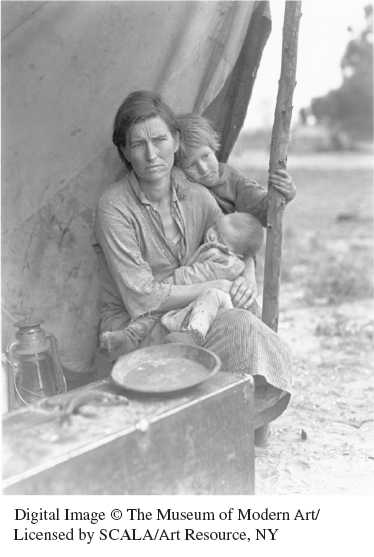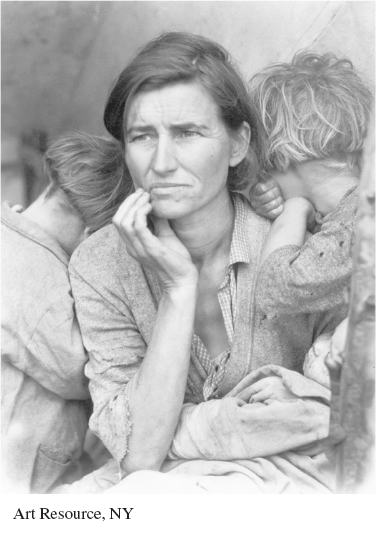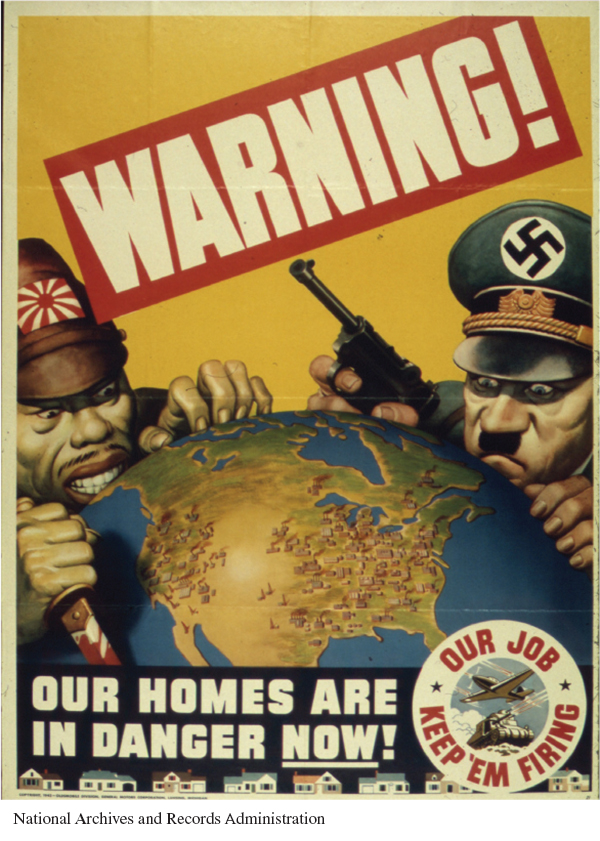Additional Images for Analysis
In 1936, photographer Dorothea Lange (1895–1965) took a series of pictures, including the two below, of a migrant mother and her children. Widely reprinted in the nation’s newspapers, these photographs helped to dramatize for the American public the poverty of displaced workers during the Great Depression.


Topics for Critical Thinking and Writing
Dorothea Lange drew increasingly near to her subject as she took a series of pictures. Make a list of details gained and lost by framing the mother and children more closely. The final shot in the series (above) became the most famous and most widely reprinted. Do you find it more effective than the other? Why, or why not?
Note the expression on the mother’s face, the position of her body, and the way she interacts with her children. What sorts of relationships are implied? Why is it significant that she doesn’t look at her children or at the camera? How do the photographs’ effects change according to how much you can see of the children’s faces?
These photographs constitute a sort of persuasive “speech.” Of what, exactly, might the photographer be trying to persuade her viewers? Try to state the purpose of Lange’s photographs by completing this sentence: “Lange would like the viewers of her photographs to. . . .” Write a brief essay (250 words) making the same case. Compare your written argument to Lange’s visual one. Which form of persuasion do you find more effective? Why?
Whom do you think Lange had in mind as her original audience? What assumptions does she make about that audience? What sorts of evidence does she use to reach them?
During World War II, the U.S. government produced a series of recruitment posters bearing the legend “This is the enemy.” These posters depicted racially stereotyped images of both German and Japanese soldiers, typically engaged in acts of savage violence or clandestine surveillance.

Topics for Critical Thinking and Writing
It has been claimed that one role of propaganda is to dehumanize the enemy so that (1) soldiers will feel less remorse about killing opposing soldiers and (2) civilians will continue to support the war effort. What specific features of this poster contribute to this propaganda function?
Some would claim that such a racially provocative image of a Japanese soldier should never have been used because of the potential harm to all Asians, including patriotic Asian Americans. (Did you know that that the 442nd Regimental Combat Team, consisting solely of Japanese American volunteers, was by war’s end the most decorated unit in U.S. military history for its size and length of service?) Others believe that the ordinary rules do not apply in times of national crisis and that, as an old saying has it, “All’s fair in love and war.” In an essay of about 500 words, argue for one or the other of these propositions. Refer to this poster as one piece of your evidence.
Additional Topics for Critical Thinking and Writing
Gather some of the graphic materials used to promote and reflect your college or university — including a screen shot of its Web site, the college catalog, and the brochures and other materials sent to prospective students.
What is the dominant image that your college or university administration seems to be promoting? Are there different, even competing, images of your school at work? How accurate is the story that these materials tell about your campus? Write an essay (250 words) in which you explain to prospective students the ways in which the promotional materials capture, or fail to capture, the true spirit of your campus.
Compare the Web site of your institution to one or two from very different institutions — perhaps a community college, a large state university, or an elite private college. How do you account for the similarities and differences among the sites?